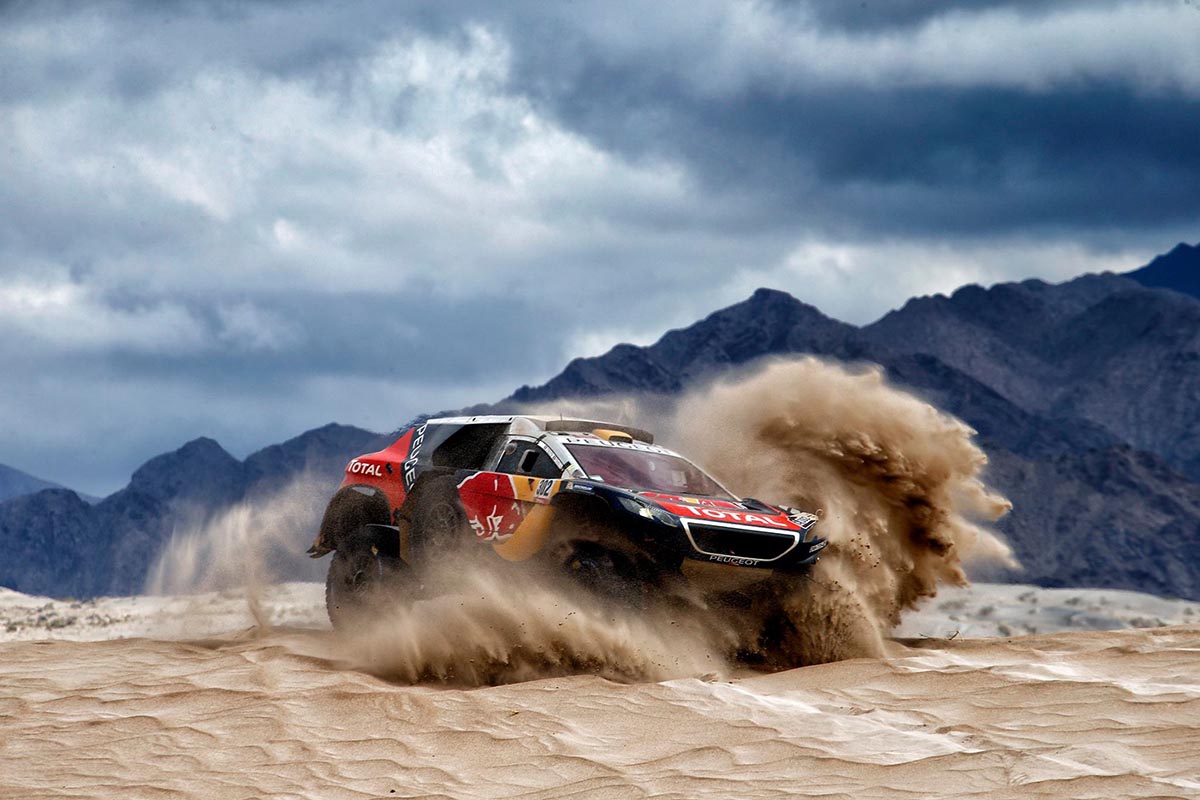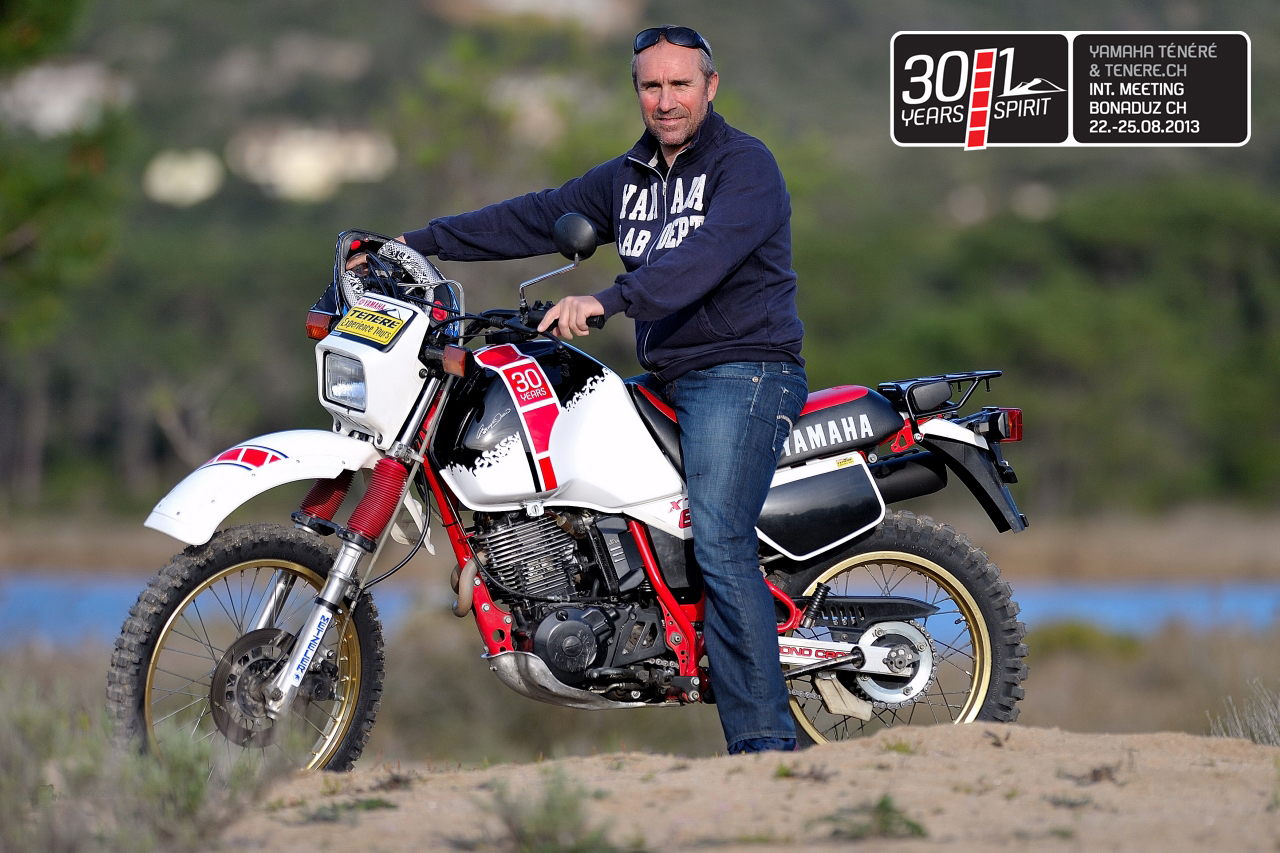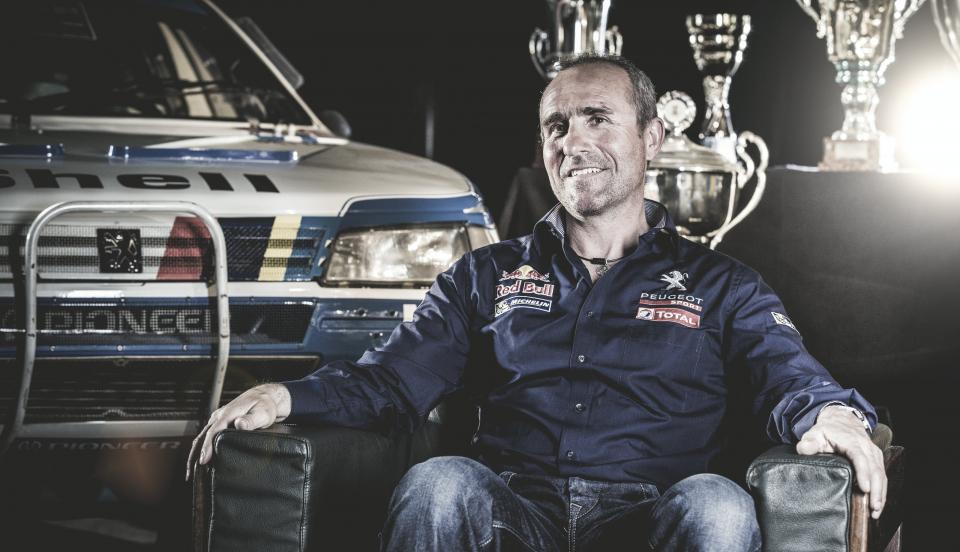"Look at these shots of the new Peugeot DKR. Takes me back to being a kid in the park hankering in vain after those big wheeled, petrol driven radio controlled cars that the older boys were having so much fun "

Stephane Peterhansel: Dakar hero on two wheels and four…
you've never heard of Peterhansel - but he is one of the greatest drivers of all time...
You have probably never heard of Stephane Peterhansel. But he is one of the greatest racing drivers of all time. Oh, and he’s one of the greatest motorcycle racers of all time too.
In France, Rally Raid desert racing is a much bigger deal than here in England.
It makes for prime TV viewing and as such is often the stuff that teenage dreams are made of. That was the case with Frenchman Stephane Peterhansel.
Born in 1965, Peterhansel was 13 when his dreams of deep sand racing first started to form. That just happened to be the year of the first Paris Dakar Rally. He’d already been riding a motorbike for five years and would start competing in Motocross just three years later. He’d have to wait until he was 26 to win his first Dakar but since that January in 1991 he has dominated the world’s toughest motor race for 25 years, notching up his latest victory this year in 2016 at the age of 51.
In the year that Thierry Sabine got the Dakar rolling it is a lesser known fact that the 13-year-old Peterhansel was already tasting national success on wheels. He had just become the French National skateboarding champion – and it was, no doubt, some of this board-learnt athleticism and balance that led to his later success on two wheels.

It was at the helm of a moto that Peterhansel was to make his first mark deep in the sands of Africa. He’d first entered on his Yamaha in 1988 – the same year that Ari Vatanen’s Peugeot got nicked, ending his race – and came in 18th. Between his first win in 1991 and 1998 he won a total of six times, coming second in 1996 with refuelling issues and not competing at all in 1994 due to a spat with the organisers.
This was, and is, an incredible achievement in a race so hard – around 6000 miles in 18 days hard – that the act of finishing itself is considered a victory. Then, in an incredible and audacious decision, he decided to re-enter the rally in 1999 in the car class. When asked to explain this momentous decision the understated Frenchman said simply. ‘After winning six times I hold the world record for the most wins so it’s time to move over to cars.’
There you have it. It has to be said he made the transition as naturally and easy as his explanation.

In 1999, in his debut run in a class that was packed with professional rally car drivers, he came in a respectable 7th. The year after he came an incredible 2nd. Then in 2001 he won the T1 car class, becoming only the second person, after Hubert Auriol, to win on both two wheels and four.
Racing over the intervening years in cars with Mitsubishi, Team X – Raid, and Peugeot – his victory this year has seen him win this amazingly tough endurance race a total of 12 times. This has to be one of the greatest achievements in Motorsport history.
This is a race where some day sections are over 500 miles long, in searing daytime heat, freezing night time conditions – where man and machine are pushed to the limits of endurance. Navigation is intensely difficult. Pilots of these mad Desert Warrior vehicles encounter virtually every type of terrain a motor vehicle can possible manage. Just to finish is an achievement. To win it once is a feat of incredible skill and stamina. To win it 12 times in two different classes? Well, fill in your own hyperbole…
This is a world class sportsman and athlete that has been at the top of his game for 25 years and is still winning at 51 in gruelling events. But likely you’ve never heard of him. OK he’s French, but what is going on here?

It’s all about the telly of course.
So we’re back to where we started. If you’re in France in January 2017, dreaming teenager or jealous adult, you can watch live action from ‘The Dakar’ every day during the race at primetime on France TV Sport (their BBC equivalent) – which also has a dedicated live feed website for the race. You can catch a diary programme, called ‘Journal’, every evening at 8-ish, then hoover up a show called ‘Bivouac’ which goes behind the scenes in the race camps every day.
But even with the race going out to 190 countries across 70 channels worldwide here in Blighty you’ll be lucky if you can grab a highlight or two at an ungodly hour on Eurosport. Outside of this sketchy mainstream coverage you’ve pretty much got to rely on Red Bull videos posted online.
Millions of us are happy to sit down on a weekend for an hour and a half to view Formula One cars repeat endless laps on over the same acreage of tarmac. For some reason, however, we seem less inclined to watch incredible custom racing machines charging through deep sands, treacherous ravines, gullies and wadis, under endless desert skies.
Go Figure.
- Peugeot driver Stephane Peterhansel and copilot Jean-Paul Cottret of France repair their car during the 9th stage of the Dakar Rally 2015 from Iquique to Calama January 13, 2015. REUTERS/Franck Fife/Pool (CHILE – Tags: SPORT MOTORSPORT) – RTR4LBT4
CLICK TO ENLARGE















